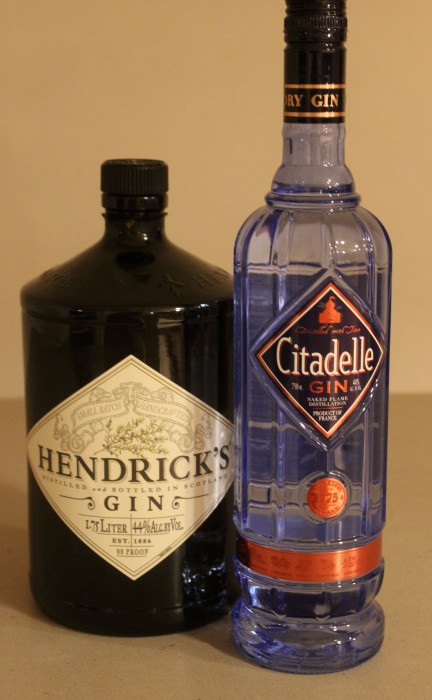Once upon a time, my wife went to a gin tasting where multiple brands were offered for comparison and enjoyment. She returned an advocate of Tanqueray and over the years many, many rounds of G&T cocktails have been enjoyed. A G&T is inherently refreshing and, very importantly, it’s a quick cocktail to make. The “big” step is slicing a lime.
That is the edge for a G&T: quick, easy and very satisfying as an introduction to an evening meal of any cuisine. Any food, American or Thai or anywhere in between, seems well served with a few sips of G&T.
And then, some friends had a party and offered us G&Ts made with Hendricks. We switched for the Hendricks seemed to offer a truly better beverage. We’ve been Hendricks people for several years.
Now, there is more progress. I got my copy of Gin: The Manual by Dave Bloom. A hundred gins are described and compared there, including how they work in a G&T. On a scale of 1 to 5, Tanqueray gets a 4 and our beloved Hendricks is a 3. Go figure that one because the Hendricks is, for us, truly better.
But, Dave Bloom is something Suzi and I are not: he’s a beverage and spirits maven, with decades of experience, multiple books under his belt and a superior palate. Importantly, in Gin: The Manual, he has a few gins where the G&T using them is ranked a full 5.
I went to the liquor store.
If I say “Dunkirk” to someone, I will probably get a stare. Only a person with generations on their frame will remember Dunkirk as an early epic battle in World War II. Not a battle, really. A great retreat of British forces from France early in the war as the Nazis closed in. Other than that, did Dunkirk ever have importance?
Yes. For centuries it was a center for gin production, gin that was then smuggled into England particularly at the end of the 18th century. While we think “Great Britain” or “London” when we talk about gin, gin has in fact been manufactured all over Europe. France has been prominent in gin inspiration and in 1989 a noted Cognac producer decided to revive the Dunkirk production that had lingered away.
The product is Citadelle and it comes in a lovely tall blue bottle. And, it makes a G&T that is easily, easily the best we have ever had.
What is going on? Let’s compare the botanicals that are added to the three gins mentioned here:
Tanqueray: juniper, angelica root, coriander seeds, liquorice root
Hendricks: juniper, angelica root, coriander seeds, cubeb berries, orris root, chamomile, caraway seeds, elder flower, meadowsweet, lemon peel, rose essence, cucumber, essence
Citadelle: juniper, almond, orris root, fennel seeds, aniseed, grains of paradise, orange peel, cardamom, violet root, lemon peel, coriander seeds, cubeb berries, cassia bark, liquorice root, savory, nutmeg, angelica rout, cumin, cinnamon
Clearly, it would be misnomer to call these three gins siblings. They are more like second cousins. All gins, to be sure, but gin is a very big, very diverse family. The botanical additions in Citadelle are quite distinct from Tanqueray and Hendricks. Take a sip and you know you’ve encountered something far away from a basic rock-your-socks cheap gin. And, while you might expect with all those ingredients that Citadelle would also be formidable on the palate, it is not. It’s rather demur. You tongue and nose do sense that there is a whole lot going on. But it is all balanced, subtle and relaxingly pleasant.
Add tonic water, some lime, and you will have a great, great beverage.
Ah, Gin: The Manual does have some other recommended gins for a G&T that rates as a 5. I am returning to my liquor store.

